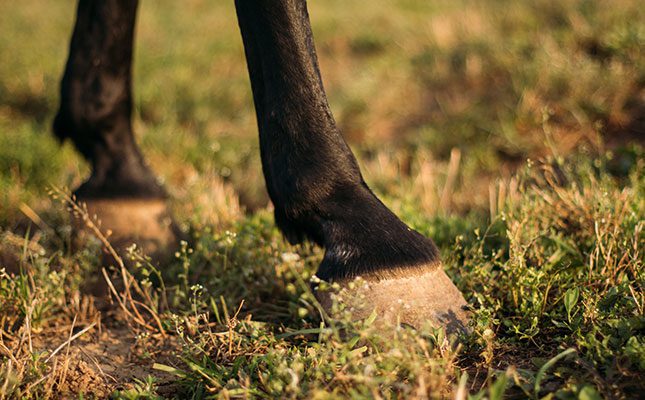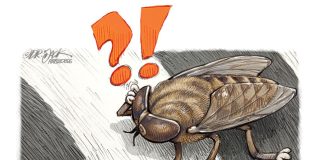
Photo: Flickr
Recently on Facebook there was a picture of an X-ray taken of a well-schooled dressage horse that showed the presence of sidebone, and the question was asked: is this an unsoundness?
To my shame I prissily wrote “of course” and I was WRONG! As long as the horse trots out sound, the presence of a calcified collateral cartilage is not considered unsoundness.
READ The fundamentals of hoof care
To understand the role of the collateral (ungular) cartilages, you need to visualise the bones, cartilages, ligaments and tendons of the foot of a horse. Below the fetlock there are three phalangeal bones.
The third phalanx is the one resting on the ground, inside the hoof: the ‘coffin bone’. Just behind it is the navicular bone.
The collateral cartilages extend upward from either side of the coffin bone and help the hoof expand when it hits the ground and suddenly expands to compensate for the weight of the horse.
Heavier horses, such as Warmbloods and cart horses, exert more pressure on this cartilage. Over time, the cartilage strengthens itself by changing into bone. This is known as ‘ossification of the collateral cartilage’, or sidebone.
Although the cartilage becomes stronger, ossification can decrease the natural expansion of the hoof to distribute the weight when the hoof hits the ground. In essence, the horse has made itself a stronger, thicker hoof that does not bounce.
However, these more solid hooves will result in the horse reacting negatively when tested with a hoof tester because they are hard, not flexible.
Testing for soundness
When you purchase a competition horse for a lot of money, it is advisable to have a soundness examination done by a veterinarian. It includes hoof testing and may include X-rays of all four limbs, including the joints.
Sidebone will show up. However, according to the Merck Veterinary Manual: “Sidebone is usually an incidental radiographic finding and rarely causes lameness.
If sidebone is a cause of lameness, the lameness should entirely subside with a unilateral palmar digital nerve block on the affected side.”
They suggest special shoeing to compensate and if this does not work, the palmar digital nerve should be cut. The veterinarian will then be happy to fill in a letter for the insurance company saying the horse is unsound.
However, there will be a note under exclusions that says ‘calcification of collateral ligament’ on a specific forelimb.
READ Length of hind hooves can influence soundness in horses
The conformation of the affected hoof is also important. A badly balanced (turned in or turned out) hoof contributes to the development of sidebone.
Sidebones usually develop when a horse’s hooves grow rapidly larger to compensate for increased body weight, between two and three years of age.
It is almost always found in the front legs, which carry 60% of a horse’s weight, and is also associated with trotting on hard surfaces.
A study done in 1906, when cart horses were the major source of transport of goods, showed that 94% of draught horses used in cities had sidebone.
Regular shoeing by a qualified farrier is essential, but heavy Warmbloods are almost always shod if used in competitions, so this may not be unexpected.
The horses most likely to develop sidebone are cart-horse breeds and those that are known as ‘trotters’. In South Africa, breeds also include the Clydesdale, Percheron, Friesian horses, Hackneys and American Saddlers.
Dr Mac is an academic, a practising equine veterinarian and a stud owner.












